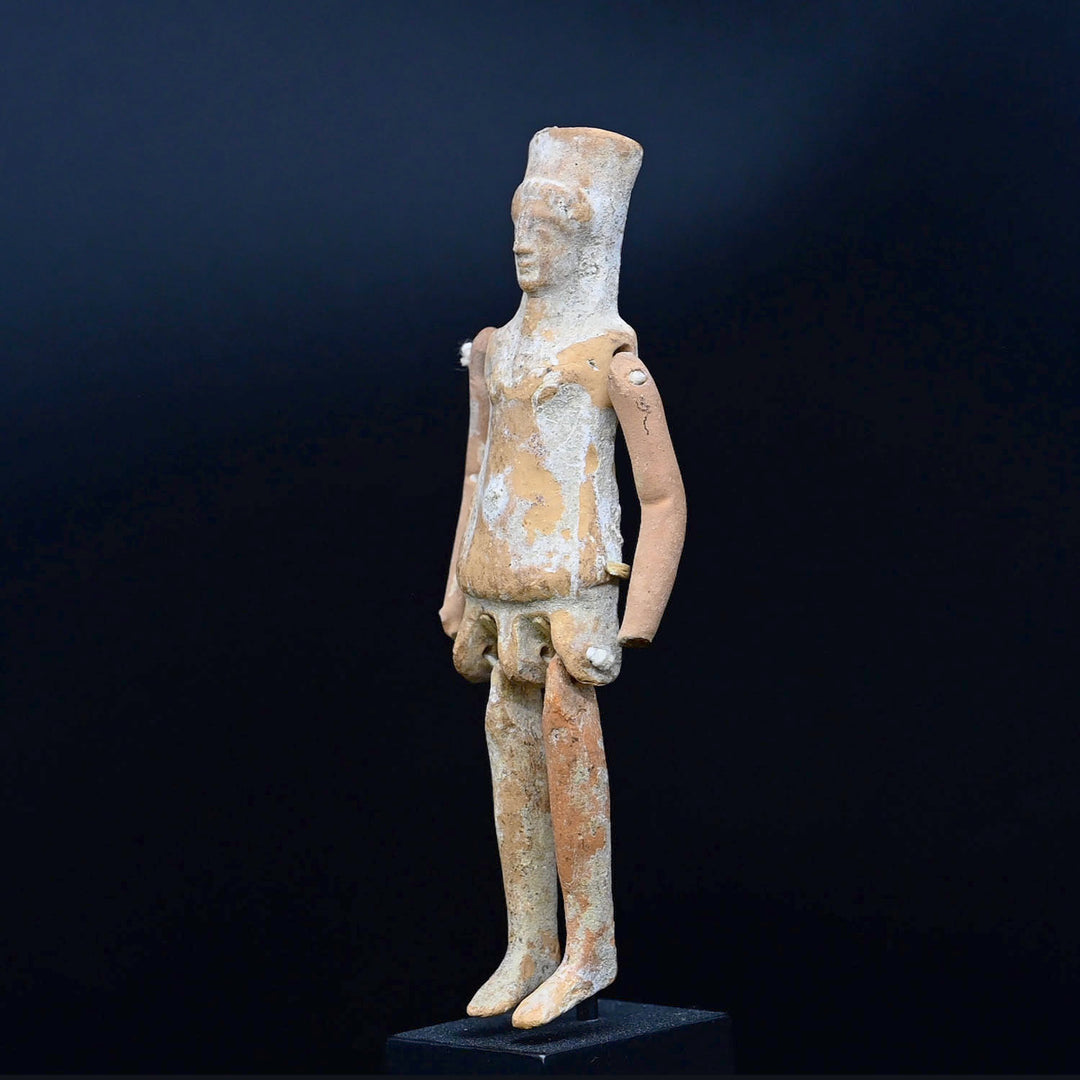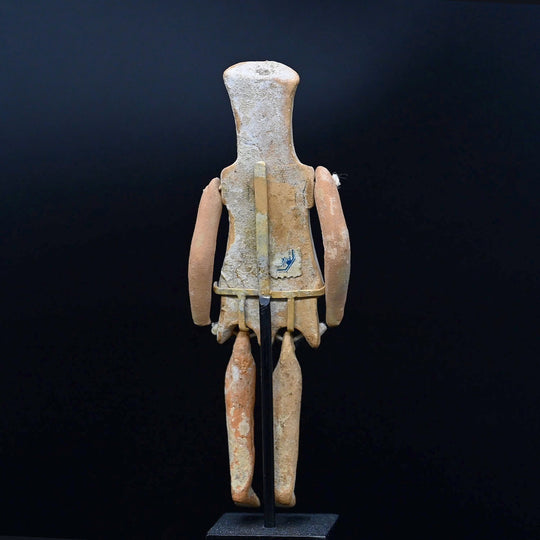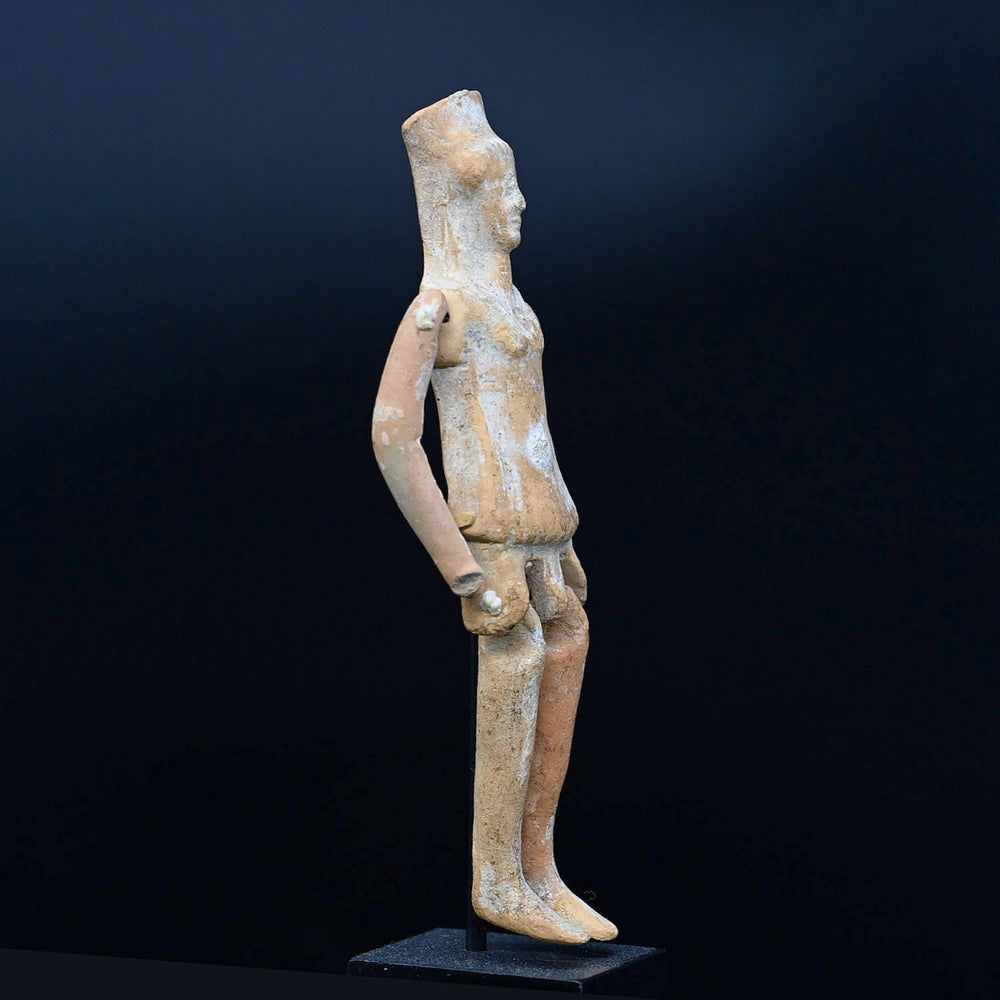A Boeotian Terracotta Jointed Figurine,
Archaic Period, ca. 5th Century BCE
GT1607
- This object qualifies for free USA shipping and a flat rate fee of $60 if shipping internationally.
This truly charming figurine belongs to a group that appeared in mainland Greece in the late sixth century B.C. It represents a girl wearing a short chiton, commonly called a chitoniskos; on her head is a kalathos, a boxlike headdress; her hair falls to the shoulders. The figurine is mold-made with only the front sculpted; the back is simply left flat. The articulated arms and legs are handmade and may originally have been attached to the body with metal pins. A hole on top of the head shows this figurine was intended to be suspended, enabling the articulated limbs to move freely. The movement of the limbs certainly lent vitality to the figurine, while adding a magical aspect.
Background: Although commonly referred to as a "doll,'' these figurines were brought to temples and sanctuaries as offerings to the gods and deposited in graves either as cherished possessions of the deceased, as gifts, or as protective devices. Occasionally they are shown holding crotala (castanets) in their hands, and the kalathos headdress helps identify them as ritual dancers. It is well known that song and dance were common features of Greek worship. In fact, several ancient authors refer to a specific dance, called kalathiskos, that was performed by young girls wearing short chitons and kalathoi.
cf: Muratov, Maya B. “Greek Terracotta Figurines with Articulated Limbs.” In Heilbrunn Timeline of Art History. New York: The Metropolitan Museum of Art, 2000–. http://www.metmuseum.org/toah/hd/gtal/hd_gtal.htm (October 2004)
Dimensions: Height: 6.3 inches (16 cm)
Condition: Loss to both hands and top of legs conserved, 19th century fragile stringing to arms and legs replaced with conservation material, good remains of original white slip so overall in very good condition. Presented on a museum quality custom mount. A truly charming example!
Provenance: Private Dundee, IL collector, with partial early 20th century identification label on back, thence by descent.
Sands of Time provides a lifetime, unconditional guarantee of authenticity and provenance. Every object you purchase from us is accompanied by a Certificate of Authenticity, stating culture, provenance, and age.
Furthermore, we conduct due diligence to ensure the item, to the best of our knowledge, has not been illegally obtained from an excavation, architectural monument, public institution, or private property. Wherever possible, reference is made to existing collections or publications.Wherever possible, reference is made to existing collections or publications.
We ship Tuesday to Friday with FedEx and usually same day if your order is received before 2pm. Within the continental USA, packing, shipping and insurance is free. Depending on size and destination, delivery times range from one to five business days.
For overseas shipments we charge a small flat rate which includes packing, preparation of all customs paperwork, insurance and carrier fees in compliance with all USA and International customs requirements. Overseas shipments are sent using either USPS Priority Mail or FedEx but contact us if you have a shipping preference. International customers are responsible for all duties and taxes.



















